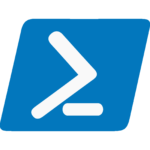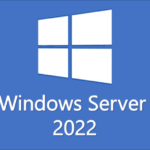What is Linux? At its core, Linux is a free and open-source operating system that stands out due to its stability, flexibility, and high security. Unlike proprietary systems like Windows and macOS, Linux allows anyone to view, modify, and distribute its source code. As a result, it has spawned numerous versions, known as “distributions,” each tailored for specific needs. Whether you are running servers, handling cloud infrastructure, or developing applications, Linux’s modular design and strong community support make it the go-to operating system for many technical professionals.

What is Linux?
In this guide, we will break down the essential characteristics that make a crucial part of today’s technological landscape, discuss its advantages in enterprise and cloud computing, and explore why it has become a key tool for professionals across the IT and software development industries.
Linux as the Backbone of Modern Computing
Widespread Use in Enterprise Servers and Cloud Environments
First and foremost, Linux plays a pivotal role in powering modern enterprise and cloud computing environments. With its robust and secure nature, it runs a majority of web servers, databases, and cloud services worldwide. From small businesses to tech giants like Google and Amazon, the operating system forms the backbone of these companies’ infrastructure.
Moreover, distributions, such as Ubuntu Server, Red Hat Enterprise Linux (RHEL), and CentOS, are specifically optimized for server performance and scalability. This versatility is a major reason why it has become a critical component in DevOps, cloud management, and IT operations.
Open-Source Licensing and Cost Efficiency
One of the greatest advantages is open-source licensing. In contrast to proprietary operating systems that require costly licenses, Linux offers a free, open alternative. While some enterprise distributions like RHEL offer paid support plans, the core operating system remains freely available for anyone to download, use, and modify. This makes it not only cost-effective but also highly adaptable to specific business requirements.
Furthermore, organizations that run this OS on their infrastructure benefit from lower operational costs, which is one reason why it is preferred in environments requiring scalable, large-scale deployments.
Technical Advantages
Command-Line Interface (CLI) Mastery
In addition to cost savings, it is renowned for its strong command-line interface (CLI), which provides direct access to powerful system management tools. Unlike operating systems that rely on graphical user interfaces (GUIs), Linux prioritizes the command line for system control, making it ideal for technical users who need fine-grained control over their environment. The CLI allows administrators to automate tasks through scripting, manage files more efficiently, and directly interact with system processes.
Thus, it empowers system administrators, developers, and DevOps engineers to enhance their productivity by mastering the CLI, leading to faster system configurations, troubleshooting, and deployments.
Enhanced Security and Stability
Another reason it is highly regarded in enterprise environments is due to its inherent security and stability features. Since it is open-source, the developer community frequently finds and fixes security flaws quickly. This proactive approach results in fewer vulnerabilities compared to closed-source systems, which are slower to respond to security threats.
In addition, the way it handles processes and permissions makes it more resistant to malware and hacking attempts. Its multi-user architecture ensures that user permissions are segregated, meaning a compromised user account cannot easily affect the entire system. Combined with its modular structure, this makes Linux an excellent choice for mission-critical applications that require 24/7 uptime.
Customization and Community Support in Linux
Tailored Environments for Specific Needs
Another key feature is its high degree of customization. Whether you’re running a lightweight desktop environment or a high-performance server, Linux distributions can be tailored to fit virtually any use case. This flexibility is particularly beneficial in embedded systems, high-performance computing (HPC), and scientific research environments where specialized hardware or software configurations are required.
Additionally, developers can modify the kernel itself to suit particular tasks, making it highly effective for everything from web hosting to real-time analytics.
Strong Community and Support Networks
Linux has a sizable and active community to support it, which complements its customization options. This community offers extensive documentation, tutorials, and open forums where users can find solutions to nearly any problem. Popular distributions like Ubuntu, Debian, and Arch maintain robust documentation that covers installation, configuration, and troubleshooting.
Moreover, this community-driven approach ensures that innovations and updates happen quickly. Whether you’re looking for bug fixes, new features, or just community advice, Linux has the resources to support a wide array of technical needs.
Transitioning to Linux and Broader Benefits
For those accustomed to using Windows or macOS, transitioning to Linux may seem like a daunting task. However, once users become familiar with the command-line interface and its powerful scripting capabilities, they often find that it offers far more flexibility and control. As a result, many professionals who work in IT, system administration, or development environments eventually transition to it for its efficiency, performance, and security advantages.
Conclusion
In conclusion, it is far more than just another operating system—it is a foundational tool for IT infrastructure, cloud computing, and technical development. Its free, open-source nature combined with unparalleled customization options makes it a powerful choice for businesses and individuals alike. Whether you are optimizing your infrastructure for performance or exploring ways to improve system security, it is an essential tool in the modern computing landscape.
By mastering Linux, technical professionals can unlock a world of possibilities, from improving server performance to building scalable cloud solutions. As the technological ecosystem continues to evolve, so does the relevance of Linux—solidifying its place as a critical component in today’s IT world.
References
Here are some external resources where you can find further detailed information:
- Linux Kernel Official Website: For the latest updates and the official source code of the Linux kernel.
- Red Hat Enterprise Linux (RHEL): Learn more about one of the most widely used enterprise Linux distributions.
- Ubuntu Official Website: A comprehensive resource for Ubuntu Linux, one of the most popular distributions for both desktop and server environments.
- Debian Project: Explore Debian, one of the most stable and widely supported Linux distributions.
- Arch Linux: Dive into Arch Linux for a highly customizable and lightweight Linux distribution suited for advanced users.



